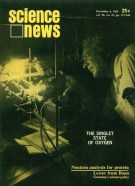50 years ago, income inequality was severe in the U.S. It still is
Excerpt from the December 6, 1969 issue of Science News

Over the last half century, the gap between the haves and the have-nots in the United States has persisted.
T. Tibbitts/bagira22/iStock /Getty Images Plus








